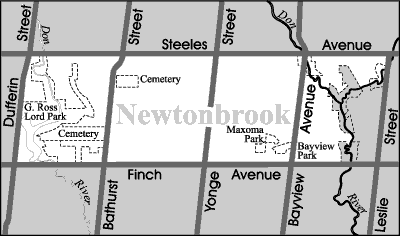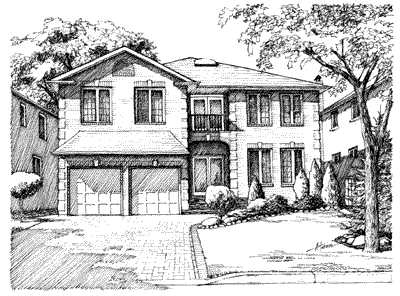|
 |
|
|
 |






 |
 |
|

|
62 Robingrove Road, Toronto, Ontario M2R2Z9
|
History of Newtonbrook

Newtonbrook is located at the north end of the City
of Toronto. It is situated between the east and west branches of the Don
River Valley, which serve to provide an attractive natural backdrop for
this neighbourhood in addition to providing residents with plenty of
recreational opportunities.
Newtonbrook's most famous native son is the late
Lester B. Pearson who became Prime Minister of Canada in 1963 and won the
Nobel Peace Prize for his role in diffusing the Suez Canal crisis. The
local Lester B. Pearson school is named in his honour.

Newtonbrook was first settled in the early 1800's.
This hamlet revolved around saw and grist mills that operated on the east
and west branches of the Don River. The spiritual centre of this hard
working pioneer community was the Newton Brook Wesleyan Church which was
named after Reverend Robert Newton. One of Newtonbrook's earliest settlers
was Lieutenant Colonel William S. Durie of the Queens Own Rifles. Durie
subdivided part of his Newtonbrook property in 1847 creating what is now
known as Drewry Avenue. At first Drewry Street was given the name "Pope's
Lane" because so many Roman Catholics built houses here. The "Rueter
House" at 270 Drewry is the only house still standing from this early
Newtonbrook subdivision.
When Newtonbrook was subdivided for large scale
residential development in the 1950's most of the former village landmarks
were demolished. The two notable exceptions are the Newtonbrook
Schoolhouse, circa 1878, located at 43 Drewry Avenue and the second
Newtonbrook General Store, circa 1907, located on the north-west corner of
Yonge Street and Drewry Avenue.
|
|
|
|
|
 |
 |
|
|
|
|
|
|
|
|
|
|
 |
|
|
|